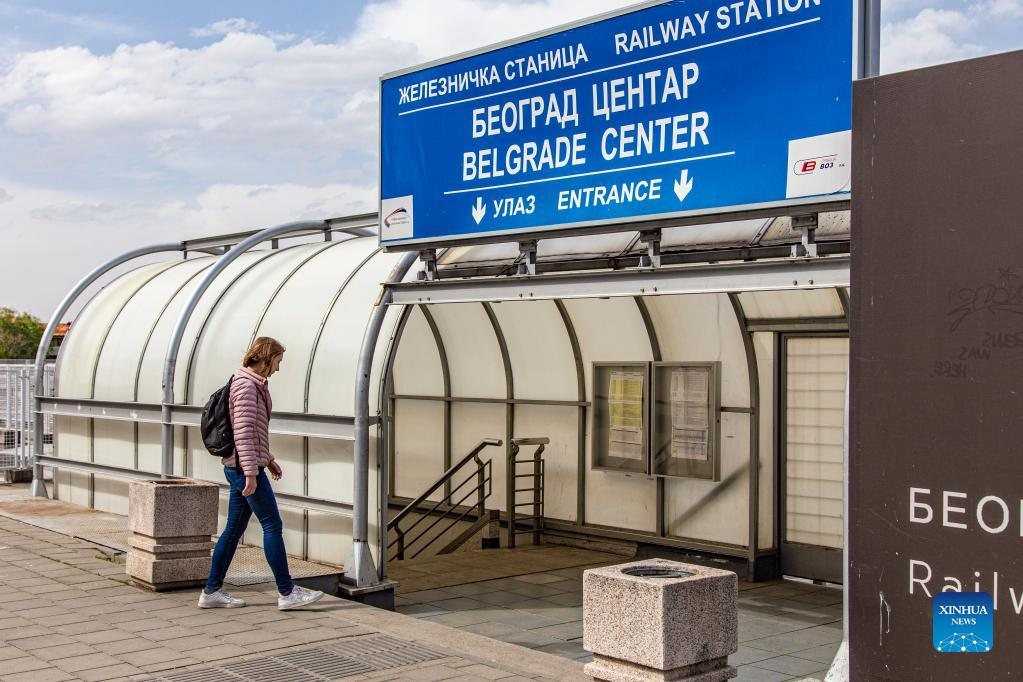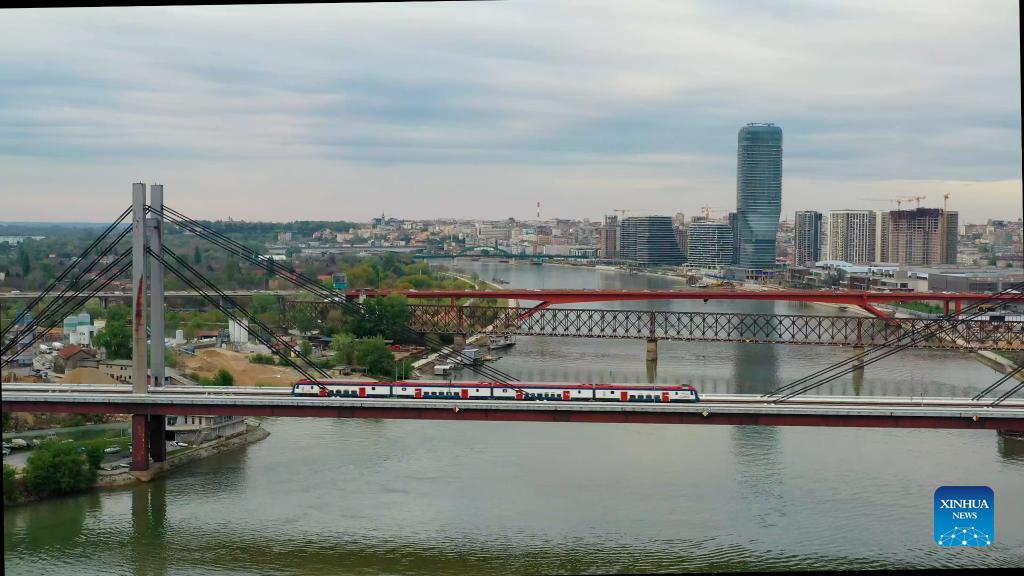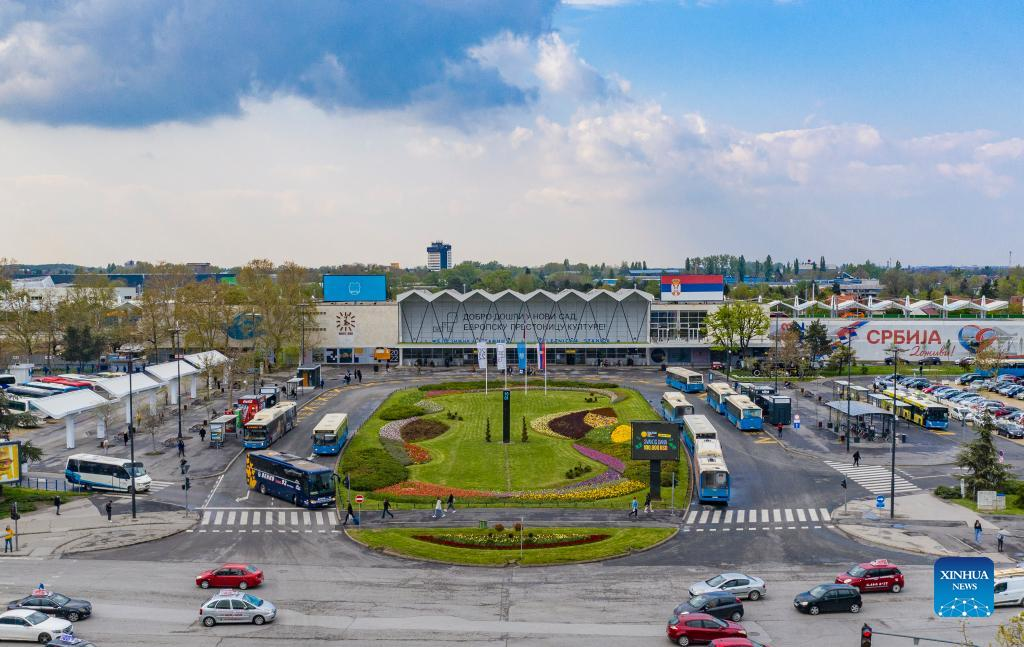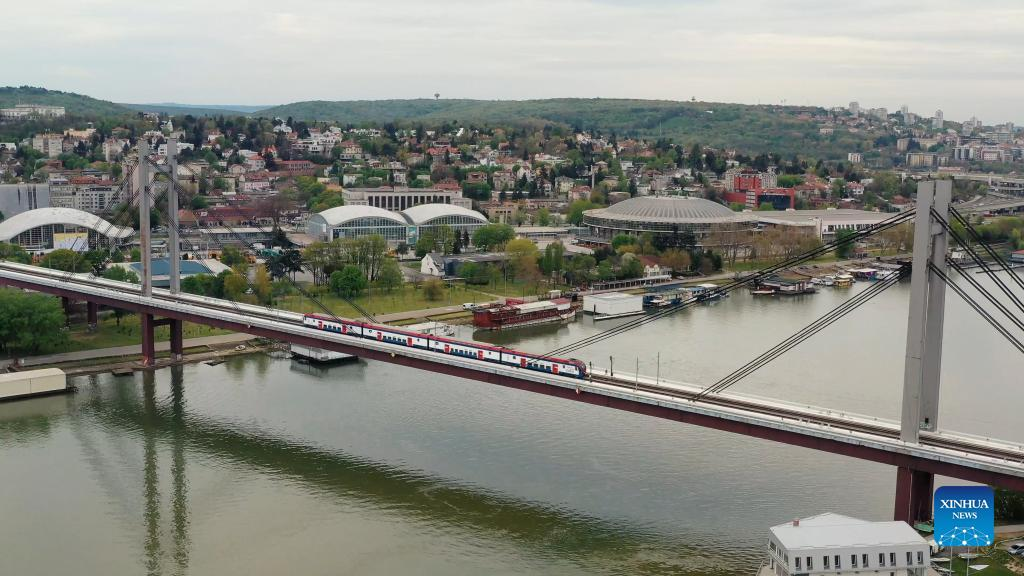
Aerial photo taken on April 23, 2022 shows the Belgrade-Novi Sad section of the Belgrade-Budapest railway in Belgrade, Serbia. (Photo by Wang Wei/Xinhua)
BELGRADE, April 28 (Xinhua) -- A decade of nerve-racking uncertainty has ended for Serbian graphic designer Jastra Jelacic with the recent inauguration of the newly upgraded railway line connecting her country's two largest cities.
Jelacic, 36, said her commute to work used to be exhausting, and she was "losing a lot of time."
The old rail service was unreliable: trains were often late, and breakdowns were a common occurrence. Accordingly, Jelacic could never predict how long the 80-km journey would take. Her career ties her to Belgrade, while she is a mother of two back home in Novi Sad.
Jelacic became a commuter in 2013, when she was hired by the Belgrade office of Serbia's public broadcaster RTS.
For years, she had to spend four or five hours each day to travel to and from work. Long stretches of the old railway line were single-track, and it could take really long to wait for the approaching trains to pass.
Not any more.
The new high-speed railway, part of the Chinese-built future rail link between Belgrade and Budapest, the capital of Hungary, has a design speed of 200 km per hour, reducing Jelacic's daily commute to a breeze.
The inauguration ceremony of the upgraded 75-km Belgrade-Novi Sad section of the railway took place on March 19 with Serbia's President Aleksandar Vucic and Hungary's Prime Minister Viktor Orban in attendance.
Vucic described the project as a veritable international effort: it is being built by Chinese and Russian companies, German firms are responsible for the surveillance equipment, and the trains are manufactured in Switzerland.
Orban congratulated Serbia on the newly built railway, emphasizing the historically strong ties between the two countries.
"In the past 70 years, we have been connecting countries in the east-west direction, and forgotten the importance of north-south connections," Orban said. "This resulted in an appalling situation that it took too many hours to get from Belgrade to Budapest. So, we made an alliance with President Vucic aiming to change this."
For Jelacic and an estimated 8,000 of her compatriots, the inauguration of the new rail link was a life-changing event.
"I feel more relaxed now, less tired," she said. "Like I'm not traveling at all!"
In July 2018, Serbia signed a 943-million-euro (1 billion U.S. dollars) deal with China Railway International (CRI) and China Communications Construction Company (CCCC) for the overhaul of the 108-km Novi Sad-Subotica section of the railway line.
Since March 19, 1,140 trains -- 38 per day on average -- have served an estimated 221,700 travelers between Belgrade and Novi Sad.
"I think that it is good that we are cooperating with China," Jelacic said. "Anything that does good for our country and will lead to improvement I support." ■

Serbian graphic designer Jastra Jelacic enters the train station in Belgrade, Serbia, April 22, 2022. (Photo by Wang Wei/Xinhua)

Aerial photo taken on April 23, 2022 shows the Belgrade-Novi Sad section of the Belgrade-Budapest railway in Belgrade, Serbia. (Photo by Wang Wei/Xinhua)

Aerial photo taken on April 23, 2022 shows the Belgrade-Novi Sad section of the Belgrade-Budapest railway in Belgrade, Serbia. (Photo by Wang Wei/Xinhua)

Aerial photo taken on April 20, 2022 shows the railway station of Novi Sad, Serbia. (Photo by Wang Wei/Xinhua)

Aerial photo taken on April 23, 2022 shows the Belgrade-Novi Sad section of the Belgrade-Budapest railway in Belgrade, Serbia. (Photo by Wang Wei/Xinhua)
